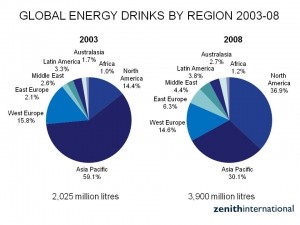Thai truck drivers put brakes on energy drink growth
Energy drink volumes increased 2 per cent in 2008 to 3.9bn litres, according to figures from Zenith.
The beverage consultancy said this represents a significant slowdown on previous years given that average growth over the past five years has been 14 per cent a year. Back in 2003 there were only 2bn litres of energy drinks sold – about half the current level.
Impact of Thai crisis
Much of the slowdown last year came from Thailand where sales of energy drinks dropped 41 per cent. In the political and economic turmoil of the past year many truck drivers, who are the country’s biggest consumers of energy drinks, have been made redundant.
This has caused sales to plunge in the country, bringing down with them the figures for the whole of the Asia-Pacific, which was the only region to experience a decline in sales last year. Consumption fell 18 per cent in the Asia-Pacific, which is a region that accounts for a 30 per cent share of the global market.
But as the following graph shows, the Asia-Pacific has lost a significant share of the world market over the past five years.
Other emerging markets
Elsewhere growth figures were more positive. East Europe was the fastest growing region in 2008, with sales up 47 per cent and Australasia also made strong gains, increasing volumes by 33 per cent.
Meanwhile, North America remains on the top of the pile in terms of market share at 37 per cent of global volume in 2008, having made major gains in recent years as the graph above shows.
“Energy drinks remain a dynamic segment in the soft drinks market, with double figure rises in most regions,” said Zenith market intelligence director Gary Roethenbaugh.
Zenith expects the energy drinks market to maintain a high growth plane and hit 5.8bn litres by 2013 from its current level of 3.9bn litres.








